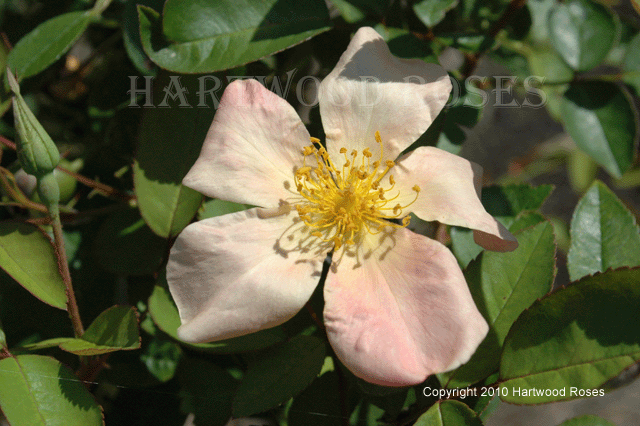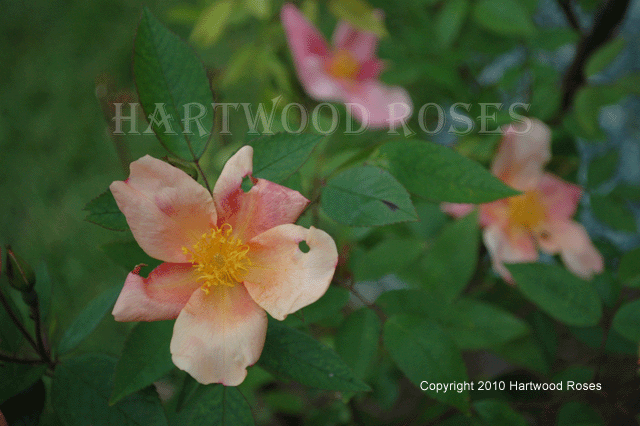The trials began with 117 rose varieties being tested. The roses were planted in alkaline soil, watered when necessary during the first year only, never fertilized or sprayed, and only pruned to remove dead wood. The survivors of that trial were the first Earth-Kind roses. It is important to note, especially here in the hot, humid South, that these roses were not evaluated for their resistance to blackspot.
There are currently 25 roses that have received the Earth-Kind designation, with more under evaluation, and I grow 13 of them. None of the Earth-Kind roses are Hybrid Tea roses. Most are Chinas and Polyanthas ... some of which are my favorites, and many are the most blooming-est roses in my garden.
Caldwell Pink
A found Polyantha rose that may be Pink Pet.
Carefree Beauty
Shrub rose, hybridized by Dr. Griffith Buck in 1977.
Else Poulsen
Floribunda, 1924
Marie Daly
Polyantha, color sport of Marie Pavie.
Here's Marie Pavie for comparison.
Mutabilis
China rose, bef. 1894.
Duchesse de Brabant
Tea rose, 1857.
Ducher
China rose, 1869.
Cecile Brunner
Polyantha, 1881.
Madame Antoine Mari
Tea rose, 1901
Reve d'Or
Tea Noisette, 1869.
New Dawn
Large Flowered Climber, 1930.
La Marne
Polyantha, 1915
I also grow Climbing Pinkie, but I can't find a photo of it. The Earth-Kind roses that I don't grow (yet) are Belinda's Dream, Perle d'Or, Sea Foam, The Fairy, Spice, Georgetown Tea, Souvenir de St. Anne's, and Knock Out.
If you want to know more about Earth-Kind Roses, visit the Texas A & M Aggie Horticulture web site HERE.
(written by Hartwood Roses. Hartwood Roses blog.)

































